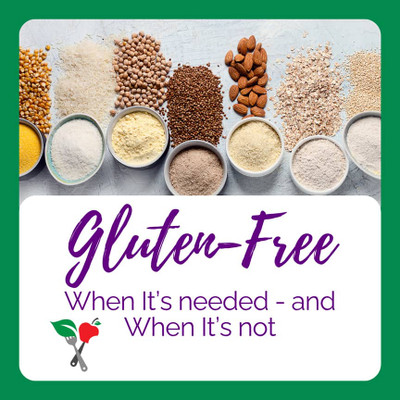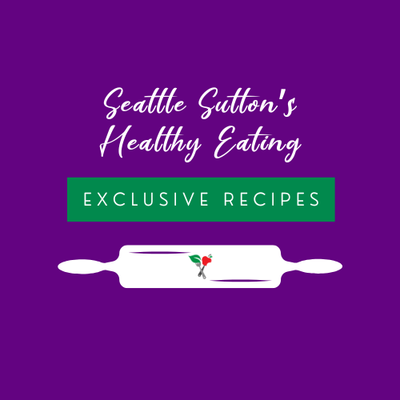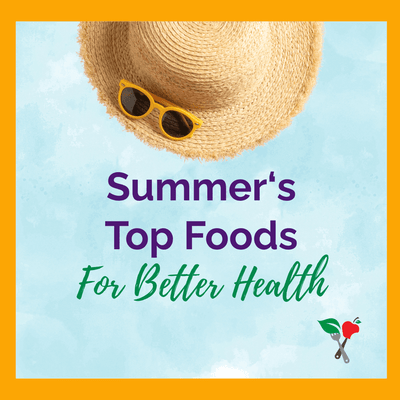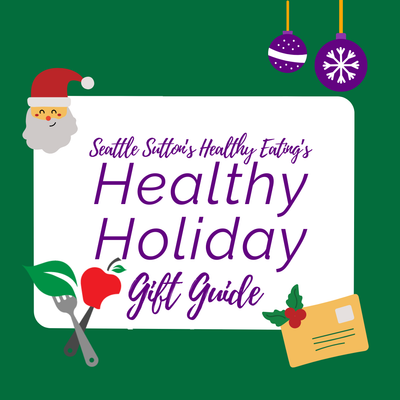Best and Worst Foods For Your Heart
Heart disease is considered a ‘silent killer’ of women and coronary heart disease is the leading cause of death globally. We must help get the word out about ways to combat the disease. Why not highlight the healthiest and unhealthiest foods for your ole’ ticker?
Best foods for your heart:
NUTS – Don’t go completely nuts, moderation is key. Your best bet is a serving of tree nuts a day which would consist of a small handful of nuts or around 12-14 pieces. Nuts are packed with protein and healthy unsaturated fats. Keep the serving size to no more than ¼ cups or you may consume more fat and calories than you might realize.
A study from the journal Nutrients which was published in April 2021 found that a daily serving of mixed tree nuts significantly improved weight loss and satiety. This is important for heart health because it has been proven that reaching and maintaining a healthy weight can help decrease your risk for cardiovascular disease and can improve cholesterol and blood pressure numbers.
Many people think they should avoid nuts while trying to lose weight because of their higher calorie count but this new study highlights why they deserve a regular place on your plate. The researchers took 95 overweight adults and gave them either 1.5 ounces of mixed tree nuts or pretzels as part of a low-calorie weight loss diet for 12 weeks. They then followed the same people for an additional 12 weeks while they followed a maintenance diet.
What they found may surprise you! There was no difference in weight loss between the 2 groups however the group that consumed mixed tree nuts had greater satiety at 24 weeks, meaning they were less hungry making it easier to maintain their weight loss. Both groups also experienced a drop in blood pressure, likely due to their weight loss. The group that consumed the daily nut serving had a significant drop in heart rate and increase oleic acid which is associated with decreases in LDL (bad) cholesterol and increases in HDL (good) cholesterol.
Another study in 2019 from Circulation Research, an American Heart Association journal, found that people with type 2 diabetes who ate five servings of nuts per week enjoyed a 17% lower risk for cardiovascular disease. This study also found that even a small amount of nuts made a difference with a 3% lower risk of cardiovascular disease and 6% lower risk of cardiovascular disease death for each additional weekly serving.
Walnuts, almonds, cashews, pistachios, or any other nut will provide healthy fat, hunger-fighting fiber, and plant-based protein to help you along your weight loss journey. The best choice for heart health would be to choose unsalted nuts that have no added oils. Read your ingredient statements and choose nuts that only list the nut or nuts and stick to 1.5 ounces of whole nuts or 2 tablespoons of nut butter.
Enjoy as a snack on their own or add to salads, stir-fries, breads, or stir into yogurt. Nut butter in a smoothie is a great way to add protein and fiber for staying power.
BEANS – Beans are powerhouses for heart health. They help you power up with plant-based protein and are chocked full of fiber. Beans are also high in minerals without the saturated fat found in some animal proteins.
According to the American Heart Association, eating beans as part of a heart-healthy diet may help improve your blood cholesterol, a leading cause of heart disease. A half-cup serving of cooked beans supplies 4-10 grams of fiber, which is an under-consumed nutrient for many Americans. Research suggests that 12-33 grams of fiber per day from food can improve cholesterol levels, lower blood pressure, and reduce inflammation.
In the small intestine, soluble fiber acts like a sponge and soaks up cholesterol-rich bile acid so it can’t be reabsorbed but instead pass through the intestine as waste. Fiber may also protect against inflammation and high levels of C-reactive protein, which are most linked to an increased risk for cardiovascular disease. Beans also contain little sodium or fat and no cholesterol. Using beans in place of unhealthy proteins such as lunch meats, red meats, and other processed meats will improve your overall heart health.
Go crazy with black beans, kidney beans, garbanzo beans, pinto, red beans, and navy beans! Look for canned beans with no added salt or rinse and drain beans in a colander with water to remove around 40% of the excess salt.
OATS – Go for oats, steel-cut oats, or coarse oats unprocessed for the best bet. These make a great meal for cold mornings or year-round overnight oats are a tasty treat. And, oats are easier to prepare than you think…especially overnight recipes that practically make themselves. Just stay away from the convenience packs that are packed with extra sugar and ingredients you want to stay away from.
Since 1997, the US Food and Drug Administration has approved the use of a health claim on foods with beta-glucan soluble fiber from whole oats, oat bran, and whole oat flour and reduced risk of coronary heart disease. Oats consumption has been shown to help lower total and LDL (bad) cholesterol. Consuming 3 g of beta-glucans per day, either from oats or barley, can lower blood cholesterol levels by 5% to 8%. People with high cholesterol are likely to see the greatest benefit in their health by adding these powerful grains to their diet.
In epidemiological studies, positive associations were noted between increased cereal grain intake, a source of both soluble and insoluble fiber, and reduced risk of metabolic syndrome, cardiovascular disease, and markers of systemic inflammation.
Beta-glucan is found in other healthy foods, not just oats. If you’re interested in increasing your intake of beta-glucan you can also consume barley, certain types of mushrooms (reishi, shiitake, and maitake), yeasts, seaweed, and algae to reap the benefits. Among these sources, barley typically has the highest content and oats the second highest.
FRESH FRUITS AND VEGETABLES – These should be the foundation of your diet. Make sure to include them in meals, snacks and get your recommended servings every day for heart health. A good rule of thumb is to make non-starchy vegetables at least half of each meal. The fiber will fill you up and help keep your arteries healthy.
The American Heart Association recommends 4 servings of fruit and 5 servings of vegetables per day for a 2,000 calorie eating pattern. That may sound overwhelming, but it doesn’t have to be complicated. Getting familiar with the proper servings sizes is the first step to help you reach this goal.
For a serving of fruit, focus on the following servings:
Whole fruit = about the size of your fist
Fresh cut or frozen fruit = ½ cup
Dried fruit (unsweetened) = ¼ cup
100% fruit juice = ¼ cup
A serving of vegetables is based on the following portions:
Raw leafy vegetables = 1 cup
Fresh, frozen, or No Salt Added Canned = ½ cup
100% vegetable juice = ½ cup
Fruits and vegetables are a great source of fiber and potassium and are naturally low in sodium, fat, and cholesterol. Foods high in potassium have been shown to help manage high blood pressure because potassium lessens the effects of sodium. The more potassium you eat; the more sodium you lose through urine. Increasing potassium with fruits and vegetables is recommended to help lower blood pressure in those with blood pressure above 120/80 who are otherwise healthy.
FISH – Eating fish twice per week is the recommendation from the Mediterranean diet and American Heart Association, which helps your heart leaps and bounds. Fatty fish in particular, such as salmon, helps keep blood pressure in check. Regulated blood pressure helps overall heart health and decreases your risk for stroke, heart attack, and other health threats. Did you know that nearly 40% of American adults have high blood pressure and many don’t even know they have it?
A 2021 study in the journal Clinical Nutrition found that regular consumption of fatty fish protects against cardiovascular events. In this study, they recruited 152 adults who were at least 65 years old with a fasting blood glucose between 100-124. They split them into two groups where they both receive diabetes prevention nutrition but one group added 200 grams of sardines per day.
They found that the group that included fatty fish daily had increased HDL (good) cholesterol and adiponectin, as well as decreased triglycerides and blood pressure. Are you wondering what adiponectin is and why it is good for you? Adiponectin is a protein that is secreted by fat cells that regulates the metabolism of fat of sugar. Having high levels of adiponectin is associated with a reduced risk of heart attack and decreased inflammation. It has been shown that obese individuals have lower adiponectin levels than people at a healthy weight.
Fatty fish is a good source of unsaturated fat which helps to regulate cholesterol levels and provides high amounts of nutrients that most people could use more such as vitamin D, calcium, omega-3, and taurine.
OLIVE OIL – Oil up, but watch the amount and limit it to no more than 2 tablespoons a day. Or you could be adding extra calories without even knowing it. The good fat in olive oil is helpful in keeping your heart healthy according to numerous studies.
Olive oil is a cornerstone for the Mediterranean diet which has been shown to cut the risk of heart disease. The main type of fat in olive oil is monounsaturated fatty acids (MUFAS) which may help lower your risk for heart disease and improve related risk factors. MUFAS have been shown to lower total cholesterol and LDL (bad) cholesterol levels.
A study from 2020 that included over 60,000 women and 30,000 men found that a higher intake of olive oil was associated with an 18% lower risk of coronary heart disease and a 14% lower risk of cardiovascular disease. They found that replacing margarine, butter, mayonnaise, or dairy fat with an equal amount of olive oil leads to a 5-7% lower risk of heart problems. They concluded that including olive oil in the diet has positive effects on inflammation, blood pressure, insulin sensitivity, and diabetes.
Worst Foods for Your Heart:
PROCESSED MEATS – These are the worst offenders for heart health and for any animal protein. Full of fat, excessive sodium, nitrates, and nitrites, they have very little, if any, redeemable qualities. Processed meat has around 400% more sodium and 50% more nitrates than unprocessed meat! This higher salt content is thought to account for the increased risk for heart disease. Eliminate these processed meats from your diet. Examples of processed meats include bacon, hot dogs, beef jerky, and processed deli meat.
RED MEAT – Slightly better than its processed cousin, processed meats, red meat is not the ideal protein source for your diet. Go lean when you go red and be sure to use it in moderation due to the saturated fat levels in red meat. Saturated fats can raise your blood cholesterol and worsen your risk for heart disease. A study from February 2021 in the Journal of the American Heart Association, found that postmenopausal women who got more protein from plants such as tofu, nuts beans, and peas were less likely to develop heart disease or diet prematurely from any cause compared to women who ate less of these foods. And more specifically, substituting nuts for red meat, eggs, and dairy helped them to live longer. The study analyzed the diets of more than 100,000 women between the ages 50-79 who were followed for up to 25 years.
FRIED FOODS – Fried anything is bad news for heart health, so try to steer clear of them and if you do indulge once in a while, try to choose those foods not fried in trans-fat. Trans fats are found in many fried foods. The American Heart Association recommends that adults who benefit from lowering LDL cholesterol eliminate trans fats entirely from their diet. Trans fats raise your bad LDL cholesterol and lower your good HDL cholesterol levels, increasing your risk for heart disease and stroke. Heart-healthy oil such as olive oil is a better choice.
SODA POP – Sugar-laden soda has been associated with heart disease, just one can of soda a day increases one’s risk for heart attacks by 20%! Dump the brown bubbly stuff and opt for a healthier choice, such as water or unsweetened tea. And it’s not just soda, sugary beverages including energy/sports drinks, sweetened “enhanced water” drinks, sweet tea, and sweetened coffee drinks all contain excess added sugars and empty calories that can negatively impact your health. Most Americans consume nearly 20 teaspoons of added sugar per day. That’s more than 3 times the recommended daily limit for women and double for men! These drinks are more likely to add extra calories, leave you unsatisfied, and make it harder to control your weight increases your risk for weight-related health problems.
SALTY FOODS – Diets high in sodium are a greater risk for heart disease due to high blood pressure. The average American consumes 3,400 milligrams of sodium per day, but the American Heart Association recommends only 2,300 milligrams or less a day of sodium and 1,500 milligrams per day for those at risk for heart disease. Check the sodium levels in unlikely places, like breads, prepared foods, and salad dressings. Compare labels whenever possible and choose options with the lowest amount of sodium. Leave the salt shaker in the cupboard and see how good food tastes with natural herbs and spices instead. The “Salty Six” is a list of 6 popular foods that can add high levels of sodium to your diet. The list from the American Heart Association includes:
- Breads and Rolls: Some foods that you might eat throughout the day, such as bread, can add up to a lot of sodium even though one serving may not seem too high.
- Pizza: One slice of pepperoni pizza can contain almost 1/3 of your daily limit of sodium. Try swapping veggies and asking for light cheese to cut the salt.
- Sandwiches: A fast-food sandwich or burger may contain more than 100% of your daily sodium. Ask for half a sandwich and salad instead.
- Cold Cuts and Cured Meats: One 2 oz serving of deli meat can have as much as a third of your daily sodium. Skip the lunch meat and add extra vegetables to keep the sodium low.
- Soup: The amount of salt in 1-cup of canned soup can vary from 49-830 milligrams, so it is very important to read the nutrition label. Choose varieties with lower sodium.
- Burritos and Tacos: Seasoning, cheese, canned beans, and other toppings can really tip the scale for sodium in these items. Look for fresher ingredients, lean protein, and watch those portions!
Are you still uncertain or confused about what to eat for optimal heart health Then, let us do the work for you! Seattle Sutton’s Healthy Eating meals are ideal for heart health since we adhere to the recommendations of the American Heart Association. We’ve been producing freshly prepared meals since 1985! Interested in learning more? Check out our delicious, freshly prepared meals today. If you have any questions about how our meals can benefit your heart health, give us a call at 1-800-442-3438 and ask for one of our Registered Dietitian Nutritionists.
Interested in eating healthy? Hungry for more?








 Weight Loss
Weight Loss Health & Wellness
Health & Wellness Diabetes
Diabetes Heart Health
Heart Health Motherhood & Family
Motherhood & Family Dietary Restriction
Dietary Restriction Other Health Conditions
Other Health Conditions About SSHE
About SSHE


